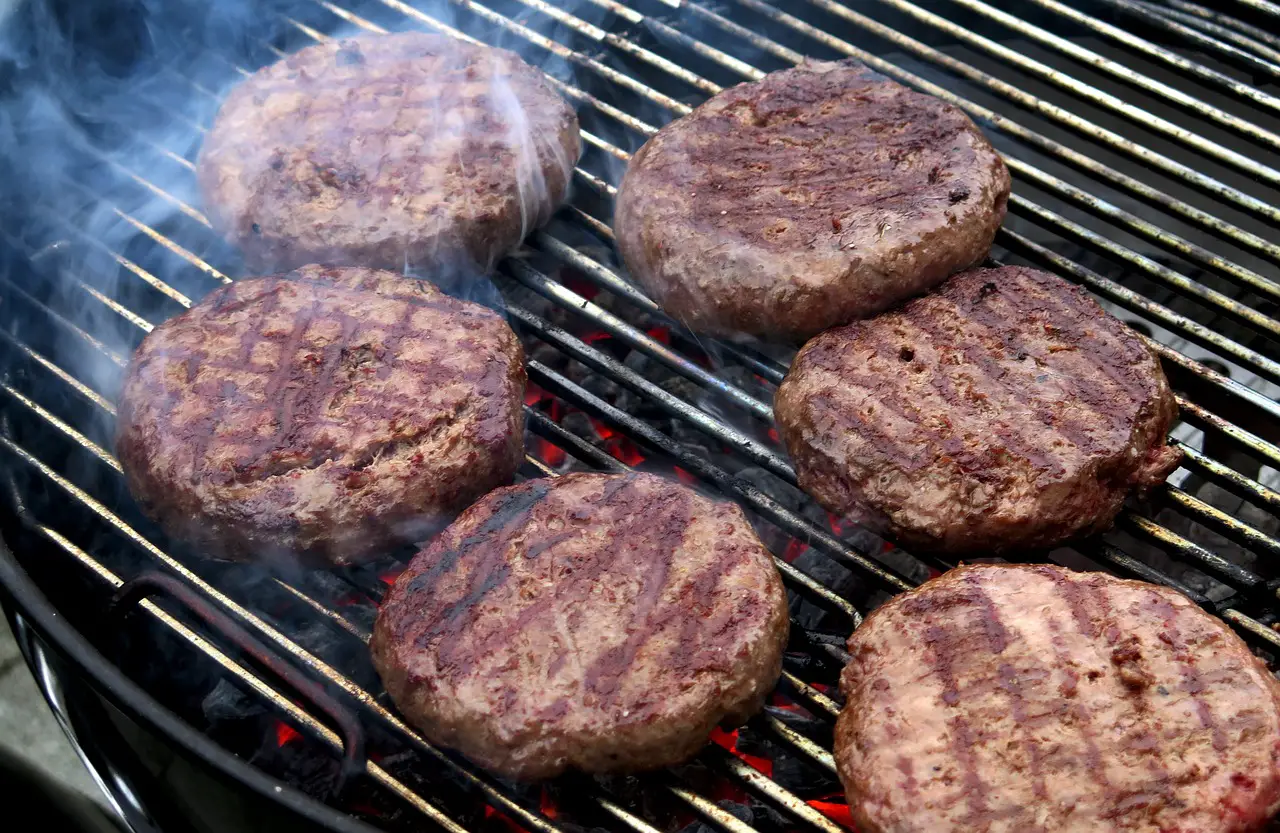Cooked hamburger meat is a staple in many household refrigerators, but it’s important to know how long it can be safely stored to avoid foodborne illness. The answer to the question, “how long is hamburger meat good in the fridge?” depends on how long you keep it in the fridge and how well you maintain the air in your refrigerator. In this article, we will discuss the shelf life of cooked hamburger meat and provide tips for storing it safely in the refrigerator. So let’s get started!

How Long is Hamburger Meat Good in the Fridge?
Cooked hamburger meat can be stored in the refrigerator for 3-4 days. It is important to store the meat in a covered container to prevent it from drying out or picking up any unwanted odors or flavors from other foods in the refrigerator.
It is also recommended to use a food thermometer to ensure that the meat is stored at a safe temperature below 40°F. If you are unsure whether the cooked hamburger meat is still safe to eat, it is best to throw it out to prevent the risk of food poisoning. It is always better to err on caution regarding food safety.
How to Freeze Hamburger Meat?
Freezing cooked hamburger meat is a great way to extend its shelf life and have it on hand for quick and easy meals. However, it is important to properly prepare and package the meat for freezing to ensure that it remains safe to eat and retains its quality.
Here are some tips for freezing cooked hamburger meat:
- Allow the meat to cool to room temperature before freezing it. This will help prevent the formation of ice crystals, which can affect the texture and flavor of the meat.
- Divide the meat into portion sizes that are appropriate for your needs. This will make it easier to thaw and use the meat later on.
- Place the portioned meat into airtight containers or freezer bags. Remove as much air as possible from the containers or bags to prevent freezer burn.
- Label the containers or bags with the date and the type of meat. This will help you keep track of the meat and use it before it goes bad.
- Place the containers or bags of meat into the coldest part of your freezer, preferably at 0°F or below.
- This will help the meat freeze more quickly and will also help it stay fresh for longer.
- Cooked hamburger meat can be stored in the freezer for up to 3 months. After that, it may start to lose its quality and flavor.
When you are ready to use frozen hamburger meat, it is important to thaw it safely to prevent the risk of food poisoning. The best way to thaw cooked hamburger meat is to place it in the refrigerator for several hours or overnight.
You can also thaw the meat in the microwave, but cook it immediately after it is thawed to prevent the risk of bacterial growth. Do not leave the meat at room temperature to thaw, as this can allow bacteria to grow and cause the meat to spoil.
What does Graying of Meat Indicate?
There are many different reasons why you may see gray meat. One reason is because of the pigments in the meat. These pigments are known as oxymyoglobin, and when exposed to oxygen, they turn red. It is also not uncommon to see a lump of meat that is a bit pink or purple. However, this does not mean that the meat is spoiled.
The meat color can vary from dark red to brown, but there are some signs you should look out for if you plan to eat it. This is because of naturally occurring pigments that are part of the meat. A lump of meat stored for several days will have a gray color. While it is okay, it can be unappealing. If you cannot access fresh ground beef, stick with the cooked version.
Some of the more common symptoms include the presence of a slimy texture, a sour odor, and a dull luster. Another sign that the meat you have has spoilt is a gray tinge. There are cases where gray meat can be used for cooking, especially in hamburgers. You should also not eat a lump of meat that smells of mold.
How to Prevent Bacterial Infection in Meat?
Whether you are planning to cook hamburger meat or eat it, you must be aware of the dangers bacteria have on your health. These pathogenic bacteria can cause serious diseases. You can avoid this if you follow a few simple tips.
First, you should always wash your hands after using the bathroom. If you are handling raw meat, you should sanitize it with soap and water. Make sure that the utensils you use are sanitized as well. Next, you should cook hamburger meat to a safe temperature. It must reach a minimum internal temperature of 160 deg.
Then, you can refrigerate the cooked meat. This will help kill dangerous bacteria. Only eat it if it has been left at room temperature for less than 4 hours. However, if it has been refrigerated for less than two hours, you can store it for further use.
Finally, be sure to discard any leftovers after three or four days. Bacteria can multiply rapidly in the air and on food packaging. That is why you should refrain from using packaging materials. Food contamination is a major public health concern all over the world. Over the past few decades, several nations have reported increased illnesses brought on by bacteria in food.
Can Meat be Cooked to Kill Bacteria?
Yes, cooking meat to a safe internal temperature can kill bacteria that may be present. However, it is important to handle raw meat safely to reduce the risk of bacterial contamination.
This includes storing it in the refrigerator at 40°F or below, washing your hands thoroughly before and after handling it and using separate cutting boards and utensils for raw and cooked meat.
It is important to cook meat to a safe internal temperature to kill bacteria and other pathogens. The safe internal temperature for different types of meat can vary, but in general, the following temperatures should be achieved:
- Ground beef, pork, lamb, and veal: 160°F
- Whole cuts of beef, pork, lamb, and veal: 145°F
- Poultry: 165°F
Overall, it is important to handle meat safely and to follow good food safety practices to reduce the risk of food poisoning. It is important to use a food thermometer to ensure that the meat has reached a safe internal temperature. Do not rely on the color of the meat, as this can be affected by factors such as the type of meat, the cooking method, and the presence of marinades or seasonings.
How can you Tell if your Hamburger Meat has gone Bad?
There are several ways to tell if hamburger meat has gone bad:
- Appearance: Fresh hamburger meat should have a uniform pink color and be relatively smooth in texture. It is likely spoiled if the meat has turned grey or brown or has developed a slimy or tacky texture.
- Odor: Fresh hamburger meat should have a slight, meaty smell. It is likely spoiled if the meat has a strong, sour, or rotten smell.
- Temperature: Hamburger meat should always be stored in the refrigerator at 40°F or below to prevent the growth of bacteria. If the meat has been left out at room temperature for an extended period, it is likely spoiled.
- Expired date: Check the expiration date on the package. If the meat has passed its expiration date, it is likely spoiled.
If you are unsure whether the hamburger meat is still good, it is best to err on caution and throw it out. It is important to handle hamburger meat safely and to follow good food safety practices to reduce the risk of food poisoning.
What Happens if you Eat Spoiled Hamburger Meat?
Eating spoiled hamburger meat can cause food poisoning, leading to various symptoms, including nausea, vomiting, diarrhea, stomach cramps, and fever. These symptoms can range from mild to severe and, in some cases, even be life-threatening, particularly for people with compromised immune systems, such as older adults, young children, and people with underlying health conditions.
The main concern with spoiled hamburger meat is the risk of bacterial contamination. Several bacteria can contaminate hamburger meat and cause illness, including Salmonella, E. coli, and Listeria. When hamburger meat is left at room temperature or stored improperly, bacteria can grow and multiply, increasing the risk of food poisoning.
These bacteria can cause serious and potentially life-threatening infections, especially in people already at risk of food poisoning. In addition to the risk of bacterial contamination, spoiled hamburger meat can also contain toxins produced by the bacteria as they grow and multiply. These toxins can cause symptoms even if the bacteria are no longer present and can be more difficult for the body to clear.
Overall, handling hamburger meat safely and following good food safety practices to reduce the risk of food poisoning is important. This includes storing hamburger meat in the refrigerator at 40°F or below, cooking it to a safe internal temperature, and using it as soon as possible after purchase. If you are unsure whether hamburger meat is safe, it is best to avoid it and throw it out.
Conclusion
Hamburger meat is perishable and should be handled carefully to avoid the risk of foodborne illness. Raw ground beef can be stored in the refrigerator for 1-2 days, while cooked hamburger meat can be stored for 3-4 days.
It is important to store hamburger meat in the refrigerator at 40°F or below and to use it as soon as possible for the best quality and safety.
If you are unsure whether hamburger meat is still good, it is best to avoid it and throw it out. Overall, handling hamburger meat safely and following good food safety practices to reduce the risk of food poisoning is important.
